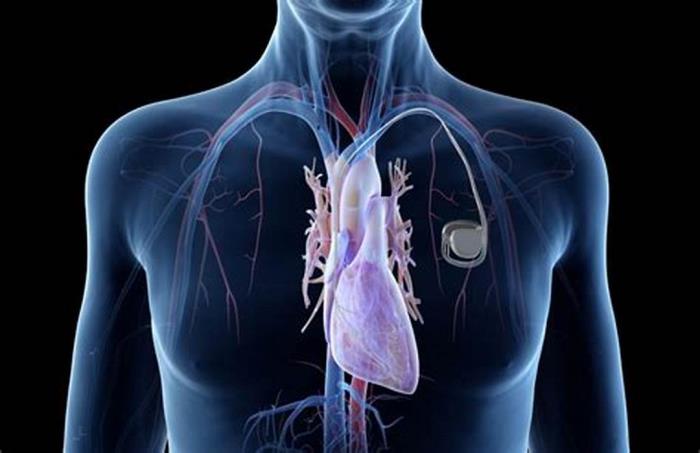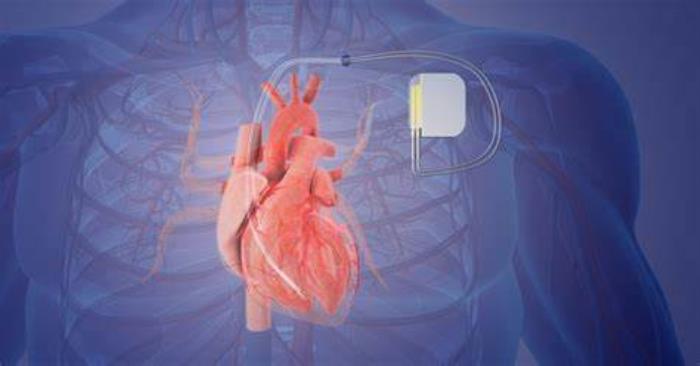Pacemakers are life-saving devices that regulate heart rhythms in individuals with arrhythmias or other heart conditions. While pacemakers are highly reliable, regular maintenance is crucial to ensure their optimal performance and prevent potential complications. Proper care involves routine check-ups, monitoring, and understanding when to seek medical attention. By staying proactive about pacemaker maintenance, patients can safeguard their heart health and enjoy an improved quality of life.
Understanding How a Pacemaker Works
A pacemaker is a small, battery-operated device implanted under the skin to help regulate abnormal heart rhythms. It sends electrical impulses to the heart to ensure it beats at a normal rate and rhythm. Pacemakers can adjust to the body’s needs, such as increasing the heart rate during physical activity. Modern pacemakers also come with advanced monitoring features, which allow healthcare providers to track performance and detect any issues. Understanding how the device functions helps patients take better care of their pacemaker and recognize when something might be wrong.
The Importance of Regular Pacemaker Check-Ups
Routine check-ups are essential for evaluating the performance of a pacemaker and ensuring it is functioning correctly. These visits allow healthcare providers to check the battery life, adjust the device's settings if necessary, and detect any early signs of malfunction. Regular follow-ups are critical, especially as the device ages, to prevent complications such as lead displacement, battery depletion, or inappropriate pacing. Maintaining a consistent check-up schedule ensures the pacemaker continues to meet the patient’s needs effectively.

Standard Guidelines for Pacemaker Follow-Up Appointments
The standard guidelines for pacemaker follow-ups typically recommend an initial check-up within a few weeks of implantation, followed by visits every three to six months. During these appointments, doctors use specialized equipment to assess the device's battery, leads, and overall functionality. Remote monitoring systems, available with many modern pacemakers, can supplement in-person visits by providing real-time data to the healthcare team. Following these guidelines ensures timely intervention if any issues arise, preventing complications.
Factors That Influence the Frequency of Check-Ups
Several factors determine how often a pacemaker needs to be checked. These include the type of pacemaker, the patient’s overall health, and the presence of any underlying heart conditions. For example, patients with complex arrhythmias or additional cardiac devices may require more frequent monitoring. The age of the pacemaker also plays a role, as the risk of battery depletion or lead malfunction increases over time. A personalized follow-up schedule tailored to the patient’s specific needs ensures comprehensive care.
How to Monitor Pacemaker Performance at Home
Patients can play an active role in maintaining their pacemaker by monitoring their health and recognizing any unusual symptoms. Modern pacemakers often come with remote monitoring capabilities, allowing data to be transmitted to healthcare providers for review. Patients should also keep a log of their symptoms, such as dizziness, fatigue, or irregular heartbeats, and report them during follow-ups. Avoiding devices that may interfere with pacemaker function, such as strong magnets or certain electronic devices, is another critical aspect of at-home maintenance.
Signs That Indicate You Need an Immediate Check-Up
Certain symptoms may indicate a problem with the pacemaker and require immediate medical attention. These include persistent dizziness, chest pain, shortness of breath, or a sudden return of symptoms the pacemaker was meant to control. Visible swelling or redness near the implantation site, along with fever, could signal an infection. Patients should also seek help if they experience unusual sensations, such as irregular heartbeats or a vibrating sensation in the chest. Promptly addressing these signs can prevent more serious complications and ensure the pacemaker continues to function properly.
The Role of Remote Monitoring in Pacemaker Maintenance
Remote monitoring allows healthcare providers to track a pacemaker’s performance and detect potential issues without requiring frequent in-office visits. This technology can identify irregular heart rhythms, battery status, and device functionality in real-time, ensuring timely intervention and reducing the need for unnecessary check-ups.
Understanding Pacemaker Battery Life and Replacement Timelines
Pacemaker batteries typically last between 5 to 15 years, depending on usage and device settings. Regular check-ups are crucial to monitor battery depletion. Timely replacement ensures uninterrupted heart function, preventing complications such as arrhythmias or device failure.
How Technological Advancements Improve Pacemaker Maintenance
Advancements in pacemaker technology, such as longer-lasting batteries and enhanced remote monitoring capabilities, have made maintenance more efficient. Innovations like MRI-compatible devices and programmable settings provide better adaptability to patient needs, improving overall outcomes.

Adjusting Pacemaker Settings During Routine Check-Ups
Routine check-ups allow physicians to adjust pacemaker settings to ensure optimal heart function. Adjustments may be needed to address changes in physical activity levels, heart rhythm, or other health conditions, ensuring the pacemaker continues to meet the patient’s requirements.
Managing Complications Detected During Pacemaker Maintenance
Pacemaker maintenance can reveal complications such as lead displacement, infections, or device malfunctions. Early detection through regular check-ups or remote monitoring enables prompt treatment, reducing the risk of serious health issues.
The Impact of Lifestyle Changes on Pacemaker Function
Lifestyle factors, such as physical activity, diet, and stress management, can influence pacemaker function. Maintaining a heart-healthy lifestyle supports the device’s efficiency and prolongs battery life, while avoiding electromagnetic interference from certain electronics prevents malfunctions.
How Often Should Elderly Patients Have Their Pacemaker Checked?
Elderly patients may require more frequent pacemaker check-ups due to age-related health changes. Typically, in-person evaluations are scheduled every six months to a year, with remote monitoring used to track functionality in between visits.
The Role of Medications in Maintaining Pacemaker Efficiency
Medications for managing heart conditions, such as beta-blockers or anticoagulants, work alongside pacemakers to maintain stable heart rhythms. It’s essential to inform doctors of all medications being taken, as some drugs may interfere with the pacemaker’s function.
When to Seek Emergency Care for Pacemaker Issues
Patients should seek immediate medical attention if they experience symptoms such as dizziness, fainting, chest pain, or a rapid decline in health. These could indicate pacemaker malfunction or a need for urgent adjustments.
Preparing for a Pacemaker Maintenance Appointment
Before a pacemaker check-up, patients should note any unusual symptoms, changes in activity levels, or health updates to share with their doctor. Carrying a pacemaker ID card and a list of medications ensures a thorough and efficient evaluation.
The Cost of Pacemaker Maintenance and Insurance Coverage
Pacemaker maintenance costs vary depending on the frequency of visits, device type, and any necessary adjustments or replacements. Most insurance plans, including Medicare, cover routine check-ups and maintenance, but patients should confirm coverage specifics with their provider.
FAQs About Pacemaker Maintenance Frequency
Pacemaker maintenance typically involves in-office evaluations every six months to a year, supplemented by remote monitoring. Frequency may vary based on the patient’s health and the device’s performance. Proactive maintenance ensures long-term reliability and heart health.
Conclusion: Staying Proactive About Pacemaker Health
Regular pacemaker maintenance, combined with a healthy lifestyle and timely interventions, is essential for ensuring the device’s efficiency and the patient’s well-being. By staying informed and proactive, patients can maximize the benefits of their pacemaker and prevent complications.
Best Pacemaker Implantation Surgery in India
The Best Pacemaker Implantation Surgery in India offers a life-saving solution for patients with irregular heartbeats, helping to regulate heart rhythm and improve overall health.
Best Pacemaker Implantation Hospitals in India
The Best Pacemaker Implantation Hospitals in India are equipped with advanced cardiology facilities and skilled surgeons, ensuring top-notch care from diagnosis to post-surgery follow-up.
Best Pacemaker Implantation Surgeons in India
The Best Pacemaker Implantation Surgeons in India are experienced in cardiac device implantation, delivering personalized care to help patients manage heart rhythm issues effectively.
FAQ
How often should I visit my doctor for a pacemaker check-up?
Most patients require check-ups every 6 to 12 months, though remote monitoring often reduces the need for in-office visits.
Can I rely solely on remote monitoring for pacemaker maintenance?
While remote monitoring is effective, in-office visits are necessary for battery replacements and physical device evaluations.
What are the signs that my pacemaker may not be functioning correctly?
Symptoms like dizziness, fatigue, chest discomfort, or irregular heartbeats may indicate pacemaker issues and require immediate attention.
How long does a typical pacemaker battery last before needing replacement?
Pacemaker batteries last between 5 and 15 years, depending on usage and device settings. Regular monitoring tracks battery life.
What happens during a routine pacemaker maintenance appointment?
During a check-up, the doctor evaluates the pacemaker's performance, adjusts settings if needed, checks the battery life, and addresses any symptoms reported by the patient.
Explore the Best Cardiologists and Cardiac Hospitals in India
When it comes to heart health, choosing the right specialist and hospital is crucial. We�ve compiled a list of top cardiologists and cardiac hospitals across India to help you find the best care available.
Top Cardiologists and Cardiac Surgeons in Major Cities
Discover the leading heart specialists in India�s major cities:
Conclusion
Your heart deserves the best care. Explore the links above to learn more about the top cardiologists and cardiac hospitals in India.
Related Resources
At ArogyaJivan, we strive to provide you with the most accurate and up-to-date information to help you make informed decisions about your healthcare. Whether you are searching for the Best Doctors in India or the Top 5 Doctors in India, our resources are tailored to guide you through your medical journey. Additionally, our comprehensive guides on the Best Hospitals in India and the Top 5 Hospitals in India will assist you in choosing the right healthcare facility for your needs. Explore these resources to ensure you receive the best possible care.
